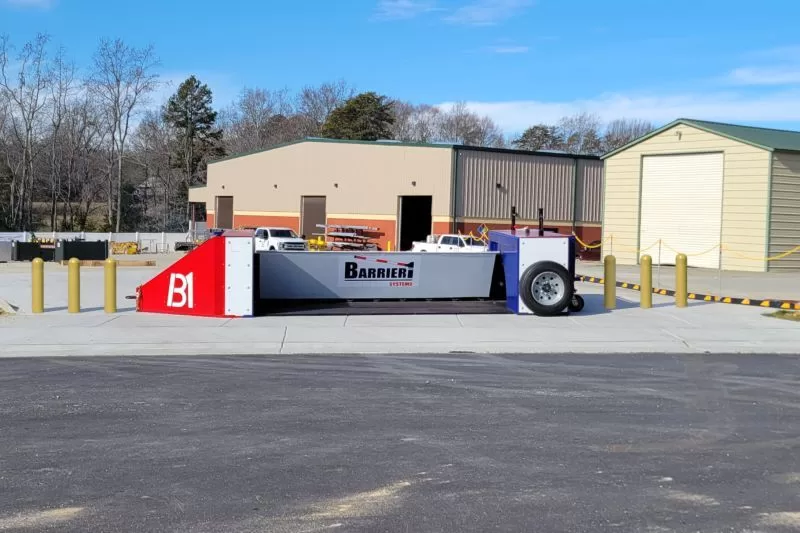All about Wedge Barriers
Wiki Article
Wedge Barriers for Beginners
Table of ContentsNot known Details About Wedge Barriers All About Wedge Barriers

The Single Strategy To Use For Wedge Barriers
The staying pressure used to the cam camera deploy release wedge plate 16 may be provided by an electromechanical actuator 84 or other various other. The spring setting up 54 and the actuator 84(e. Wedge Barriers. g., electromechanical actuator)may operate with each other to translate the web cam and raise the wedge plate 16.
As stated above, the spring setting up 54 applies a consistent pressure on the cam, while the electromechanical actuator might be controlled to exert a variable pressure on the camera, thus enabling the lifting and lowering( i. e., deploying and retracting )of the wedge plate 16. In particular personifications, the constant pressure used by the springtime setting up 54 might be adjustable. g., electromechanical actuator) is impaired. As will be appreciated, the spring assembly 54 might be covered and secured from particles or various other components by a cover plate(e. g., cover plate 68 displayed in FIG. 4) that might be significantly flush with the elevated surface 38 of the structure 14. As stated over, in the deployed placement, the wedge plate 16 offers to obstruct access or travel past the barrier 10. As an example, the obstacle 10(e. g., the wedge plate 16 )may obstruct pedestrians or cars from accessing a residential property or pathway. As discussed above, the barrier 10 is connected to the support 30 secured within the structure 14,

front braces 71. Therefore, the affiliation assemblies 72 might pivot and rotate to make it possible for the collapse and expansion of the affiliation settings up 72 throughout retraction and deployment of the bather 10. The link settings up 72 reason motion of the wedge plate 16 to be restricted. For instance, if an automobile is traveling towards the deployed wedge plate 16(e. For instance, in one situation, the safety and security legs 86 might be prolonged duringupkeep of the barrier 10. When the safety legs 86 are released, the safety legs 86 sustain the weight of the wedge plate 16 against the surface area 12. As an outcome, the training mechanism 50 might be shut down, serviced, removed, changed, etc. FIG. 5 is partial viewpoint view of a personification of the surface-mounted wedge-style obstacle 10, illustrating the camera 80 and the cam surface areas 82 of the lifting mechanism 50. Specifically, two camera surface areas 82, which are described as reduced camera surface areas 83, are positioned listed below the webcam 80. The lower cam surface areas 83 click here for info may be fixed to the surface area 12 (e. As an example, the lower webcam surface areas 83 and the placing plate 85 may create a single piece that is protected to the anchor 30 by screws or other mechanical fasteners. Additionally, 2 web cam surface areas 82, which are referred to as upper web cam surfaces 87, are positioned over the webcam 80 and coupled to (e. In other personifications, interfering layers or plates might be placed in between the surface area 12 and the reduced web cam surface areas 83 and/or the wedge plate 16 and the top camera surfaces 87 As discussed over, the cam 80 translates along the have a peek at these guys camera surfaces 82 when the wedge plate 16 is lifted from the retracted setting to the released placement. Additionally, as discussed above, the springtime setting up 54 (see FIG. 3 )might offer a force acting upon the camera 80 in the instructions 102 using spring rod 58, which might lower the pressure the electromechanical actuator 84 is called for to use to the camera 80 in order to activate and raise the wedge plate 16. 1 )to the released placement(see FIG. 4). As shown, the webcam 80 includes track wheels 104(e. g., rollers), which contact and convert along the cam surface areas 82 during procedure.
Report this wiki page